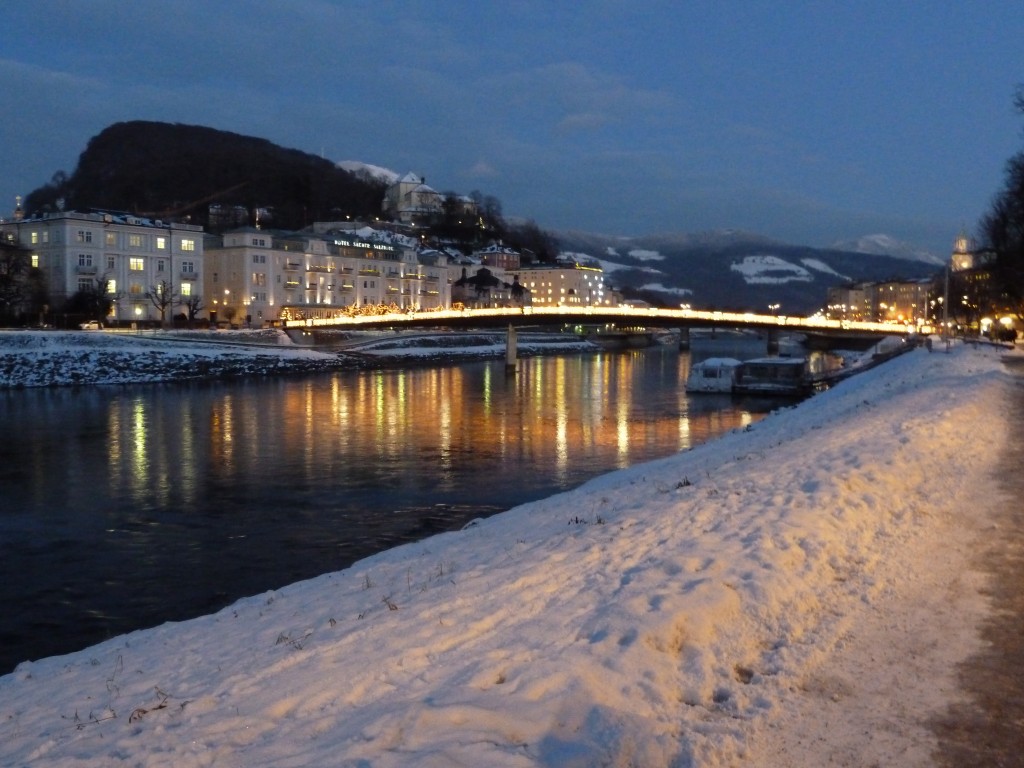Salzburg: the untold story

This morning, we were talking about the history of Salzburg. Why is it here? What was the economy based on before tourism? Why are there parts of the old town on both sides of the river Salzach, even though the river seems fast and deep? Is it famous just because of Mozart and the Sound of Music, or is there more to it? I was tempted to have a wonder through wikipedia to find out the answers to these and other pressing questions, but our plan for the day was to visit the Salzburg Museum.
When we asked the boys to research what they would like to do in Salzburg, Callum in particular settled on the Salzburg museum. The main reason was the World of Children, a special museum within a museum for children only. He was particularly taken with the Biedermeier room, which is a room that only children are allowed into! And we were keen because the museum won the European Museum of the Year in 2009.
After three false starts to try and find the beginning of the children’s trail (one of which involved me trying to mime the word “key” after my German failed me), we got the hang of it, and Callum and Declan were in heaven as they wondered from room to room trying to find the special children’s things to do. There were jigsaw puzzles, games, and they both got to try being monks in a scriptorium. The special children’s room was everything it promised, and they both loved going in there and telling us we weren’t allowed in.
But Evan and I found the adult part very difficult to follow. There was one timeline, room, just of the mediaeval period, which helped us realise that Salzburg hadn’t been part of Austria for most of its history. And there were some very interesting artefacts. But there didn’t seem to be any obvious story arc, or if there was, we kept accidentally starting at the wrong end.
Pretty much every sign was in English as well as German, so language wasn’t the problem. It seemed to be more that the museum was aimed at the in crowd. The ones who already know the basic story, and quite a bit of the controversy, and need something a bit off beat to engage their interest.
But most visitors will be people like us – who have come to Salzburg because it is famous, and beautiful, and would really like to know a bit more about it. And none of us learned very much about Salzburg from the museum. Callum and Declan had a good time, but it was just a playground, for them. And Evan and I wandered around looking at what seemed a fairly random assortment of themes from European history, with vague local relevance.
So what about my questions? This is mostly from Dr Google, but with a few impressions thrown in from the museum (which made a lot more sense after the googling).
Salzburg is here largely because of the salt mines nearby, and because it provided a good place to tax the traffic on the river Salzach. It was a roman city, which fell into disrepair after the Roman Empire fell, and then was resettled in the 8th century by a missionary St Rupert, with the main castle, the Hohensalzburg Fortress, being built in 1077, by which stage it was an Archbishopric and Principality of the Holy Roman Empire. There was already a bridge across it even in those days, so that the Salzburgers could control the river enough to tax it.
One of the Archbishops decided to use the increasing riches to rebuild Salzburg, baroque style, in the 16th century, which is what made it the beautiful city it is today. But then another, later, Prince, Leopold Anton von Firmian, started Salzburg’s decline by expelling all the Protestants, in November, 1731. They were given a week to leave, and around 20,000 citizens wandered Germany trying to find a place to stay for the winter. Unfortunately the Prince didn’t have a firm grasp on economics, and didn’t realise that expelling most of the workers probably wouldn’t do a great deal for the economy.
So after the weakened Salzburg changed hands four times during the first 10 years of the 19th century (Napoleon seems to get everywhere in Europe), it had to find a future in tourism, and managed to lure enough romantic artists and writers to create a myth of the paradise that was Salzburg.
Salzburg has a fascinating history, and I would have loved a museum to bring it to life for me.